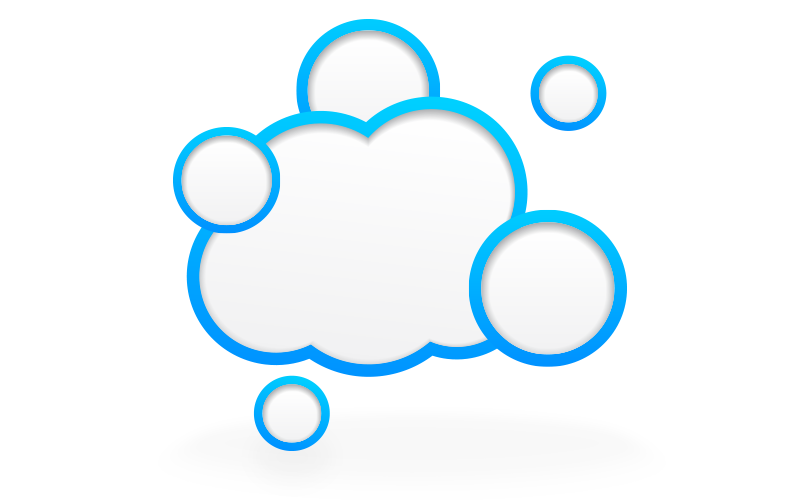What is cloud migration?
Cloud migration is defined as a process of moving a company’s data and business processes from legacy infrastructure to the cloud or in between clouds to better suit requirements. From on-premises to public, private, or hybrid cloud, or between cloud to cloud environments, cloud migration involved the movement of applications and workloads seamlessly.
Understanding the need for cloud migration stems from the usage of legacy infrastructure. A legacy product is an outdated hardware or software system that is still used by companies. Although these products are supported by their vendors in terms of upgrades, software additions, and other features, they are not very efficient. These systems could potentially slow down the business operations.
Legacy hardware infrastructure such as servers, storage, networking equipment are usually situated on the premises of a company. By having all IT infrastructure on-premises, companies are losing out on the numerous benefits that cloud computing has to offer.
Companies are moving non-critical workloads and applications to understand the benefits of cloud computing. Cloud migration software assists firms on their cloud computing journey to begin the transfer of their workloads to the cloud.
Types of cloud migration
The different types of cloud migration are also known as the “6 R’s” of cloud migration:
- Rehost or lift and shift: In this type, the software being used remains the same but not in the cloud (applications are “lifted” from legacy infrastructure and “shifted” to the cloud).
- Replatform or lift and optimize: This type of cloud migration is an extension of the rehost type. In replatform, APIs and OS are optimized during lifting and shifting. Alterations to the code base are minimal.
- Repurchase or drop and shop: In repurchase, companies identify workloads that are outsourced to SaaS vendors that specialize in similar workloads. This type is dependent on the application and therefore runs on a case-by-case basis.
- Refactoring: This type is also known as rearchitecting, where legacy applications can be redesigned from scratch to be supported in a cloud environment. The applications are replicated and moved into the cloud.
- Retain or hybrid model: In this type, a firm identifies that it does not need to move all workloads to the cloud at that point in time, just a few of them. Firms can choose to retain some of their components on IT infrastructure.
- Retire: This involves identifying and shutting down those applications that will not cause any impact on efficiency and productivity.
Benefits of cloud migration
Cloud migration can benefit users in the ways mentioned below:
- Helps combine and deploy data: Cloud migration software can combine data from various sources within the enterprise and move this data to the cloud data center selected. This ensures that data from different sources are preserved, and all required data sources are moved to the cloud.
- Speeds up application deployment: One of the benefits of cloud migration is the support it provides organizations to speed up application deployment. Since there is no need for on-premises infrastructure, businesses can skip steps such as purchasing the right servers and maintaining uptime or downtime of data centers, and directly work on their applications in the cloud.
- Helps develop a migration hub: Cloud migration tools also support the creation of a hub. This hub acts as a central point for different stakeholders to start, execute, and track the migration activity.
- Provides security support: Cloud migration software ensures that stringent security measures are put in place to ensure that data, processes, systems, and other applications being migrated are safeguarded during the migration process.
- Assists with planning and analysis: Several cloud migration tools can now analyze business data and suggest best practices to deploy and organize it. The tool can be used to plan, analyze, and derive cloud cost models, to support data-driven and well-informed business decisions.
- Ensures backup and recovery: Several cloud migration software offer the benefit of data backup and recovery. During the migration procedure, there is a chance that secure data could be lost in case of a fault. Cloud migration tools offer this feature to ensure the smooth migration of data onto the cloud.
Cloud migration best practices
Some of the best practices that should be followed when undertaking a cloud migration plan are as follows:
- Define goals: Understanding company goals and linking them to cloud migration strategy is of the essence. These goals should help answer big concerns such as why the organization needs a cloud migration strategy, its benefits from migrating to the cloud, and the mix of workloads being migrated.
- Invest in cybersecurity: An essential best practice is to invest in cybersecurity to ensure a company’s data is safe. When workloads are being migrated to the cloud, a safe and secure plan has to be in place to prevent hacks and data breaches. This is because on-premises security differs significantly from cloud security. Deploying a web application firewall or a cloud firewall is a necessary practice.
- Replicate the database: In this practice, databases are replicated throughout the database migration process so that the data is up to date till its last version. Replicating a database ensures that in case of any fault, the data available is the latest version, and there is no loss of essential data.
- Switch production: Firms should move any final workloads, processes to the cloud. Once all the applications and workloads have been moved, the cloud goes live. This marks the end of the migration process.
Cloud migration discussions on G2

Preethica Furtado
Preethica is a Market Research Manager at G2 focused on the cybersecurity, privacy and ERP space. Prior to joining G2, Preethica spent three years in market research for enterprise systems, cloud forecasting, and workstations. She has written research reports for both the semiconductor and telecommunication industries. Her interest in technology led her to combine that with building a challenging career. She enjoys reading, writing blogs and poems, and traveling in her free time.

